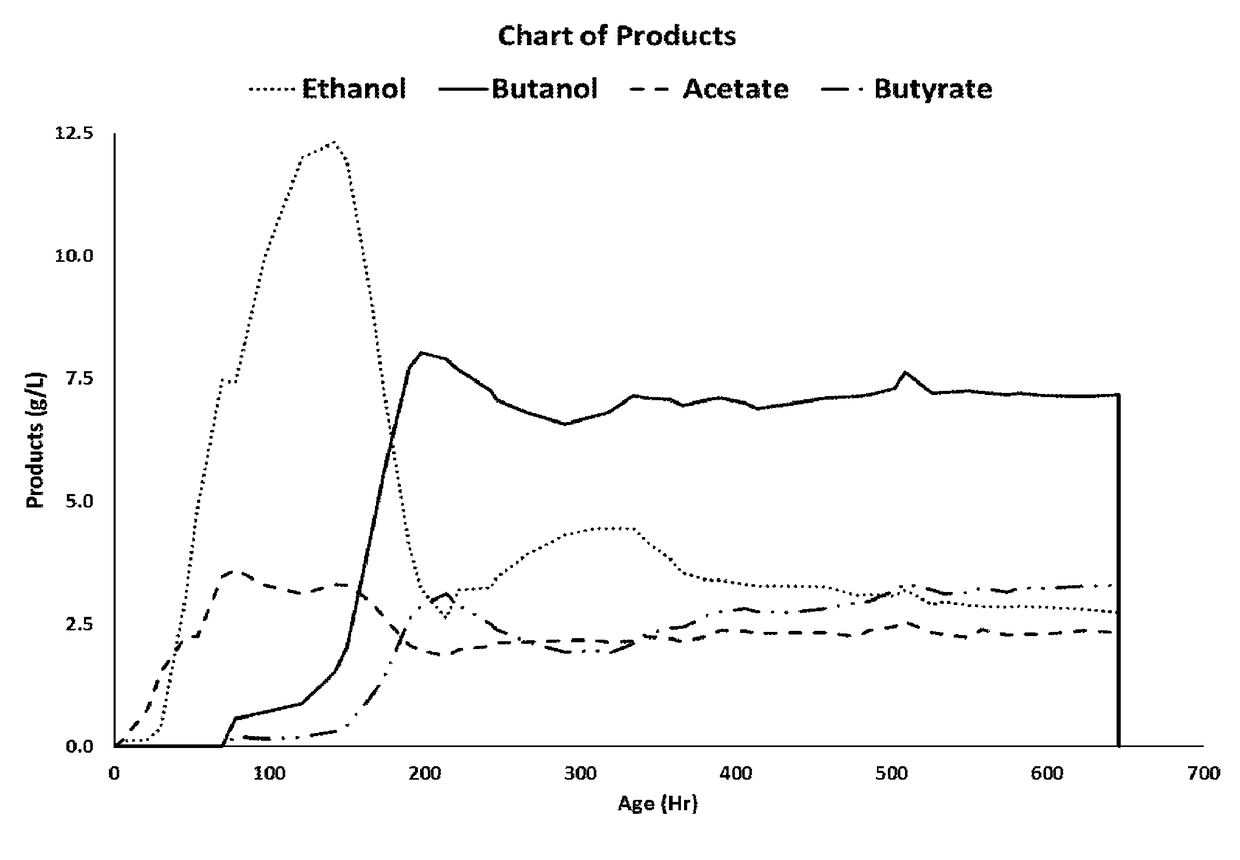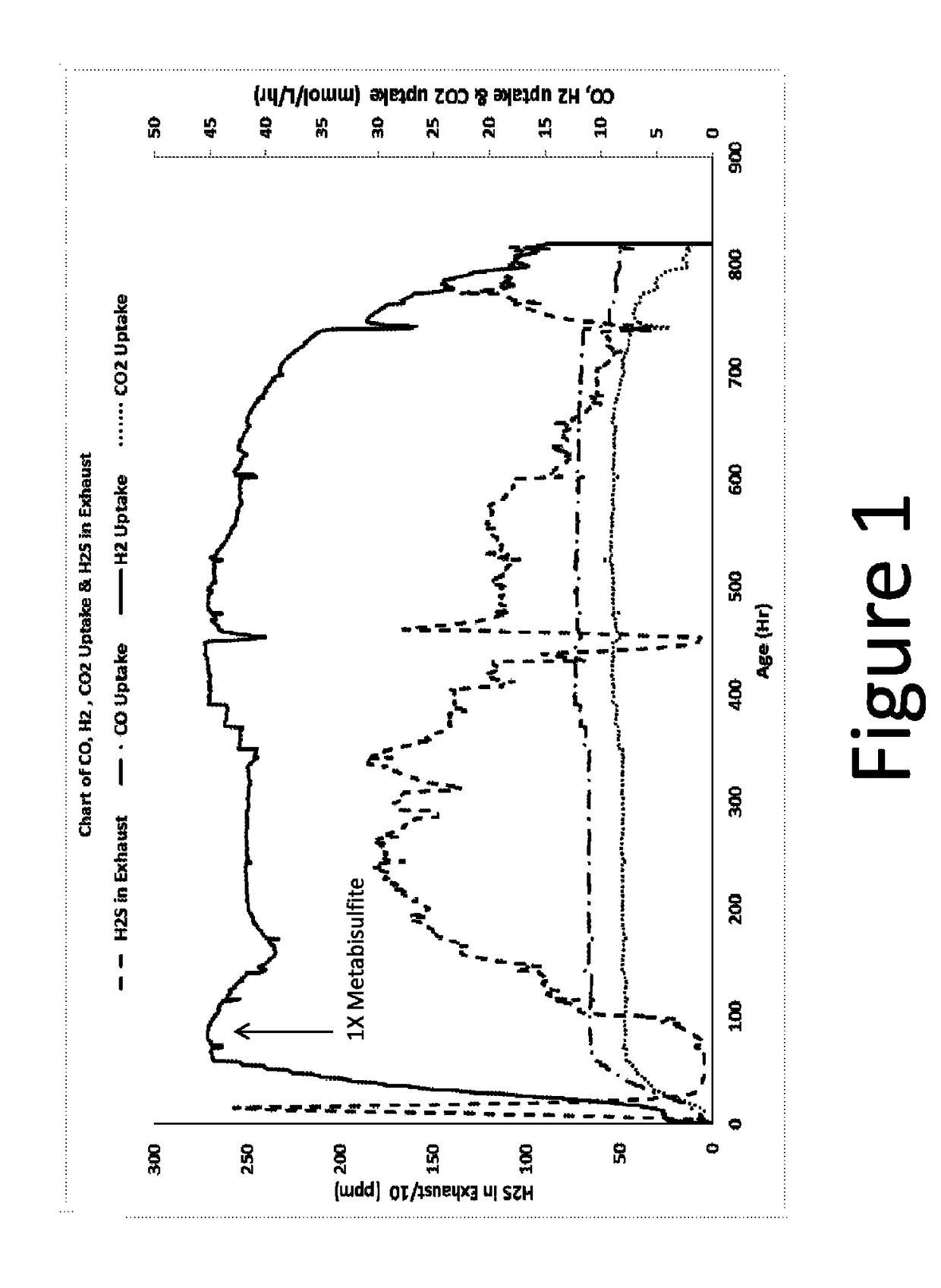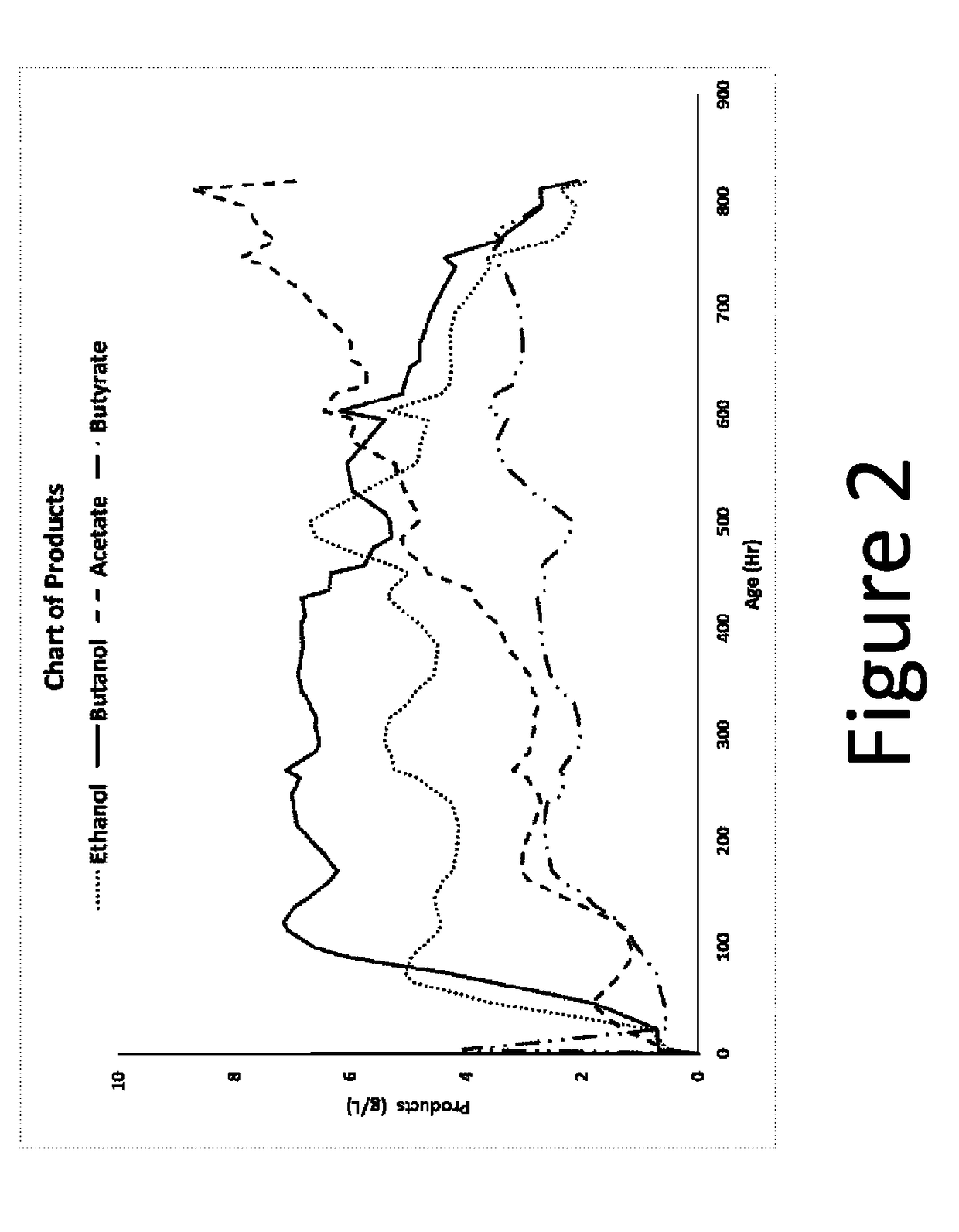Method for producing C4 oxygentates by fermentation using high oxidation state sulfur
a technology of oxidation state sulfur and c4 oxygentate, which is applied in the direction of fermentation, biofuels, etc., can solve the problems of compound interference with the growth and viability of microorganisms
- Summary
- Abstract
- Description
- Claims
- Application Information
AI Technical Summary
Benefits of technology
Problems solved by technology
Method used
Image
Examples
example 1
[0094]A seed culture comprising Clostridia autoethanogenum along with Clostridia pharus were grown in a seed vessel and then introduced into the fermentor at the beginning of the continuous fermentation run according to the General Procedures as previously described infra. At the initiation of the run (hour 0) the base liquid media in the vessel and in Media Feed Carboy 1, which was fed to the vessel, contained cysteine at a concentration of 1.2 mM which provided cysteine in an amount equal to about 1× the typical base reference concentration for the molar addition of bioavailable sulfur to the culture. After three days 0.6 mM of metabisulfite was fed to the fermenter via the Media Feed Carboy 2 as described above in order to provide a 1× addition of bioavailable sulfur atoms. At the same time all of the cysteine was removed from Media Feed Carboy 1, making 100% of bioavailable sulfur coming from metabisulfite, fed from Media Feed Carboy 2. Throughout the run gas flow remained relat...
example 2
[0097]A seed culture comprising a Clostridia autoethanogenum strain along with a consortia of ethanol and acetate consuming, and butyrate forming, anaerobes containing at least one strain of Clostridia species were grown in a seed vessel and then introduced into the fermenter at the beginning of the continuous fermentation run according to the General Procedures as previously described herein. At the initiation of the run (hour 0) the base liquid media in the vessel and fed to the fermenter from Media Feed Carboy 1 contained cysteine at a concentration of 1.2 mM which provided cysteine in an amount equal to about 1× the typical base reference concentration for the molar addition of bioavailable sulfur to the fermenter. After three days 0.6 mM of metabisulfite was fed to the fermenter via the second feed carboy described above in order to provide a 1× addition of bioavailable sulfur atoms. At the same time all of the cysteine was removed from Media Feed Carboy 1, making 100% of bioav...
example 3
[0099]A seed culture comprising a Clostridia autoethanogenum strain was grown in a seed vessel and then introduced into the fermenter at the beginning of the continuous fermentation run according to the General Procedures as previously described herein. At the initiation of the run (hour 0) the base liquid media in the vessel contained cysteine at a concentration of 1.2 mM which provided cysteine in an amount equal to about 1× the typical base reference concentration for the molar addition of bioavailable sulfur to the fermenter. Also at hour 0, the Media Feed Carboy 1 contained metabisulfite at a concentration of 0.6 mM which provided bioavailable sulfur in an amount equal to about 1×. Note that this feeding strategy is different than that in Examples 1 and 2. After 75 hours one liter of a consortia of ethanol and acetate consuming, and butyrate forming, anaerobes containing at least one strain of Clostridia species as used in Example 2 was introduced into the fermenter. At hour 21...
PUM
| Property | Measurement | Unit |
|---|---|---|
| molar ratio | aaaaa | aaaaa |
| volume | aaaaa | aaaaa |
| pH | aaaaa | aaaaa |
Abstract
Description
Claims
Application Information
 Login to View More
Login to View More - R&D
- Intellectual Property
- Life Sciences
- Materials
- Tech Scout
- Unparalleled Data Quality
- Higher Quality Content
- 60% Fewer Hallucinations
Browse by: Latest US Patents, China's latest patents, Technical Efficacy Thesaurus, Application Domain, Technology Topic, Popular Technical Reports.
© 2025 PatSnap. All rights reserved.Legal|Privacy policy|Modern Slavery Act Transparency Statement|Sitemap|About US| Contact US: help@patsnap.com



